Best cutting garden flowers – 8 gorgeous varieties for homegrown bouquets
Experts share their top cutting garden flowers, plus tips on how to look after them

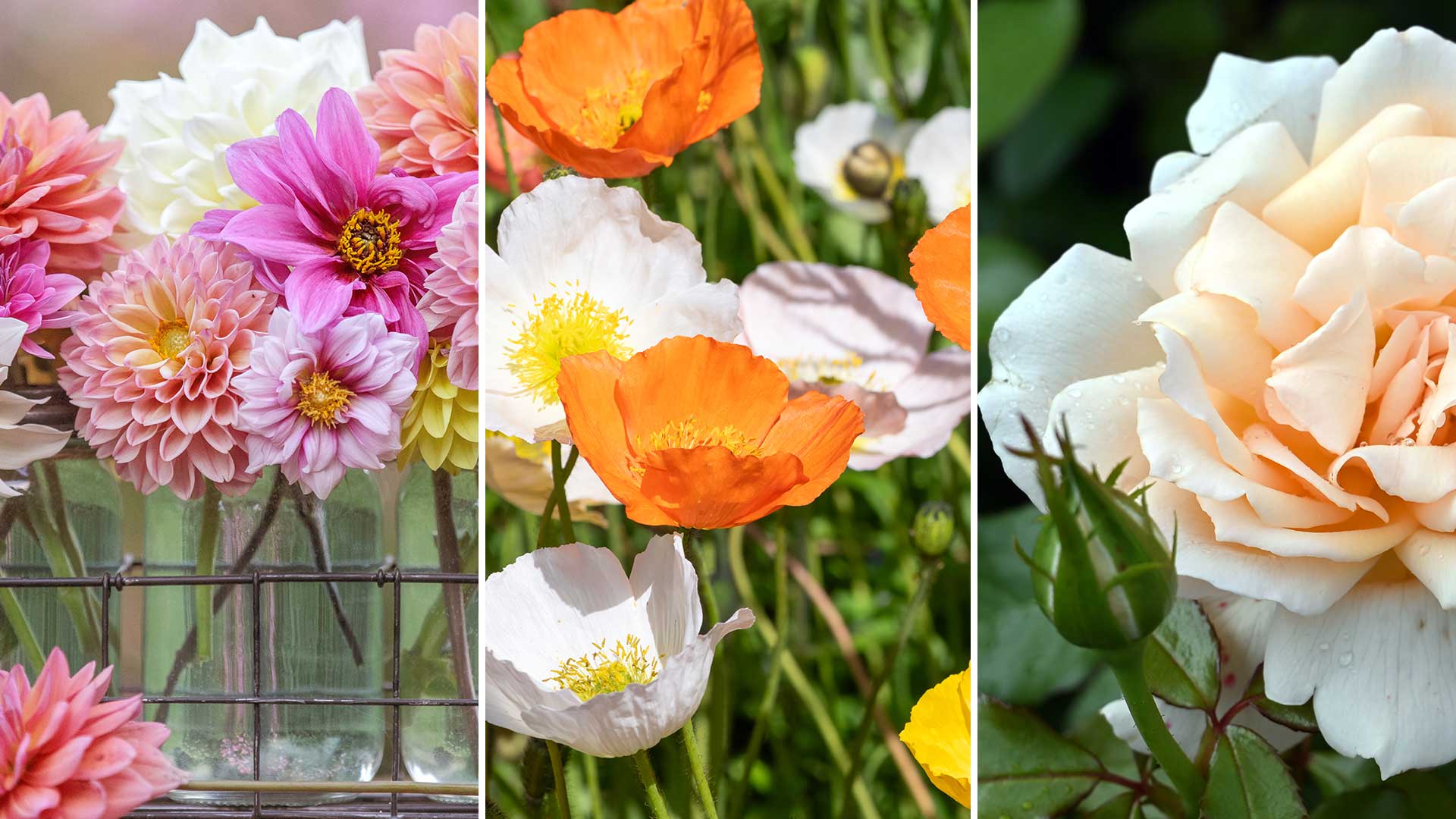
Raising cutting garden flowers to display in your home is one of the biggest joys of gardening. Whether it's a fragrant posy of sweet peas, a jug of daffodils, or a singular dahlia to marvel at, they offer a simple, seasonal focal point that makes any onlooker smile.
It's safe to say that this garden trend will always be in style. Not only is it rewarding to grow your own blooms, but the options are almost endless, meaning you can choose ones that you might not find in the shops. And, as many can be grown from seed, you can end up with huge bouquets for a very affordable price.
Flowers can be cut directly from borders or pots, leaving some to be enjoyed in the garden. Or, if you want to harvest the lot, you may want to plant a designated cutting patch. Either way, the first step is deciding what to grow – below, you'll find eight recommendations from flower-growing experts.
8 cutting garden flowers: Editor recommendations to add to your patch
From scented blooms to late summer flowers, the following will bring an extra dose of beauty to both your garden and your home. Just remember, when growing plants and displaying them indoors, to always be mindful of their potential toxicity, especially if you have pets or small children.
Wearing gardening gloves when handling any plant is a good idea to protect your skin against irritation – we love the look of these from Crocus, which feature a William Morris design.
1. Dahlias
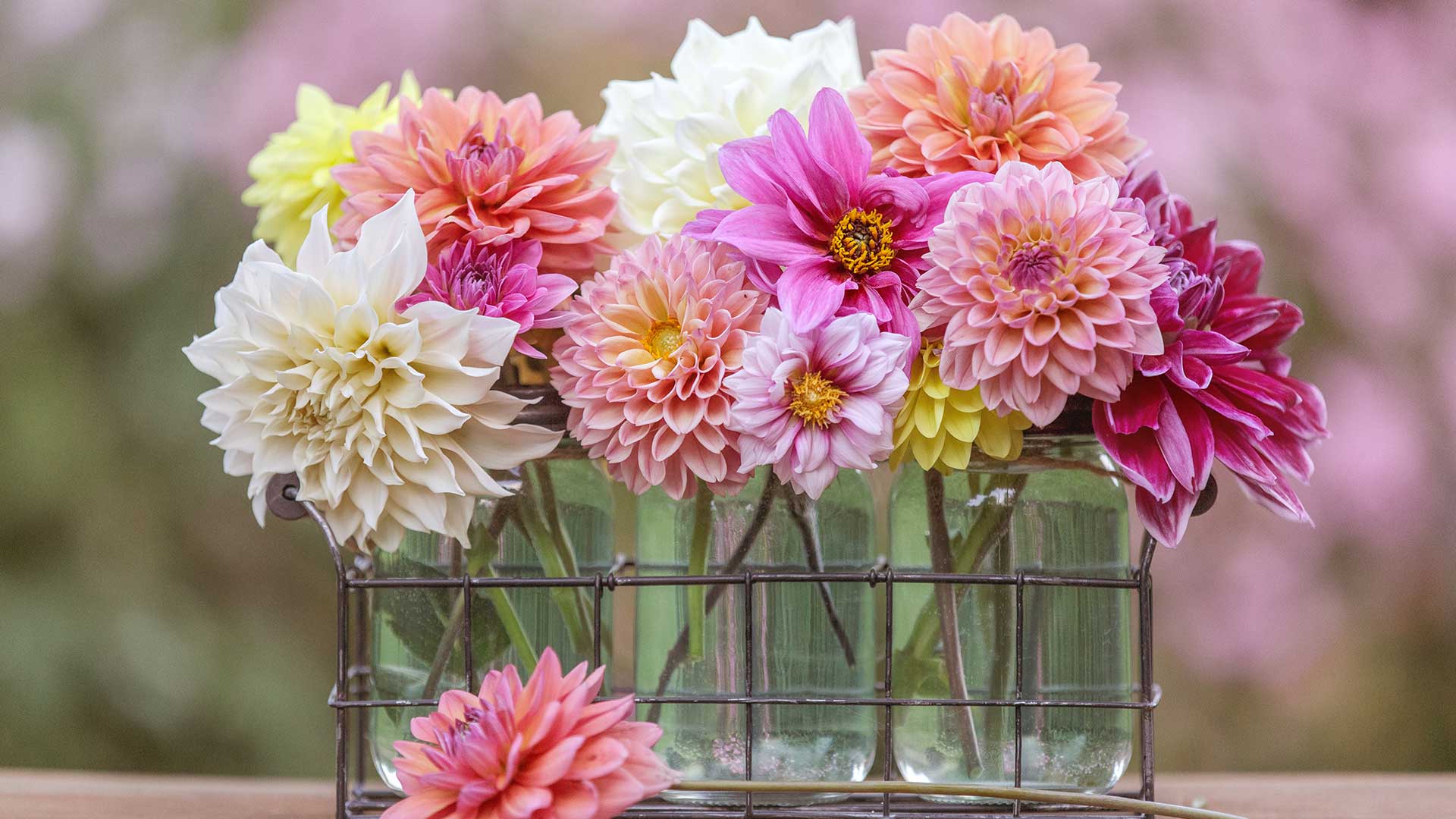
Dahlias come in all sorts of colours and shapes
Rosebie Morton, the founder of The Real Flower Company, has grown cut flowers for thirty years, and shares that dahlias are one of her stalwarts which she cannot do without. They're a good filler in the garden, she says, flowering consistently from the end of June until the first frosts. What's more, she highlights how they hold well when picked and look wonderful in any arrangement.
"Dahlias are notoriously hungry, so make sure you plant them into enriched soil once the risk of frosts is over, and keep them well fed and watered throughout the summer," Rosebie advises. "Depending on what variety you choose, some dahlias may need staking to avoid broken stems. Avoid the huge 'dinner plate' varieties if you are after an easy life!"
Sign up to our free daily email for the latest royal and entertainment news, interesting opinion, expert advice on styling and beauty trends, and no-nonsense guides to the health and wellness questions you want answered.
Milly Naden-Robinson, co-founder of Flower & Farmer, also recommends these beauties. "Dahlia 'Polventon Kristobel' is a favourite of mine, simply because of its deliciously coppery-pink colour," she says. "It works really well in late summer and autumn on its own, or incorporated with other dahlias and autumn foliage."
For other gorgeous varieties, look to Crocus, which has a wide dahlia range.
- Top tip: Rosebie says dahlias are very easy to start from tubers in early spring. "Pot up the tubers into a peat-free compost and place in a frost-free, light place to let them shoot. Once the shoots have reached 7-8cm, you can remove a few of them along with a small piece of the tuber to then pot up separately, to give you even more plants for the summer."

Rosebie Morton founded The Real Flower Company in 1995, determined to restore scent to the cut flower market. The flower farm covers eight hectares, growing over 180 different varieties of flowers and foliage as regeneratively as possible, to fulfil their nationwide online bouquet business, along with weddings and other events.
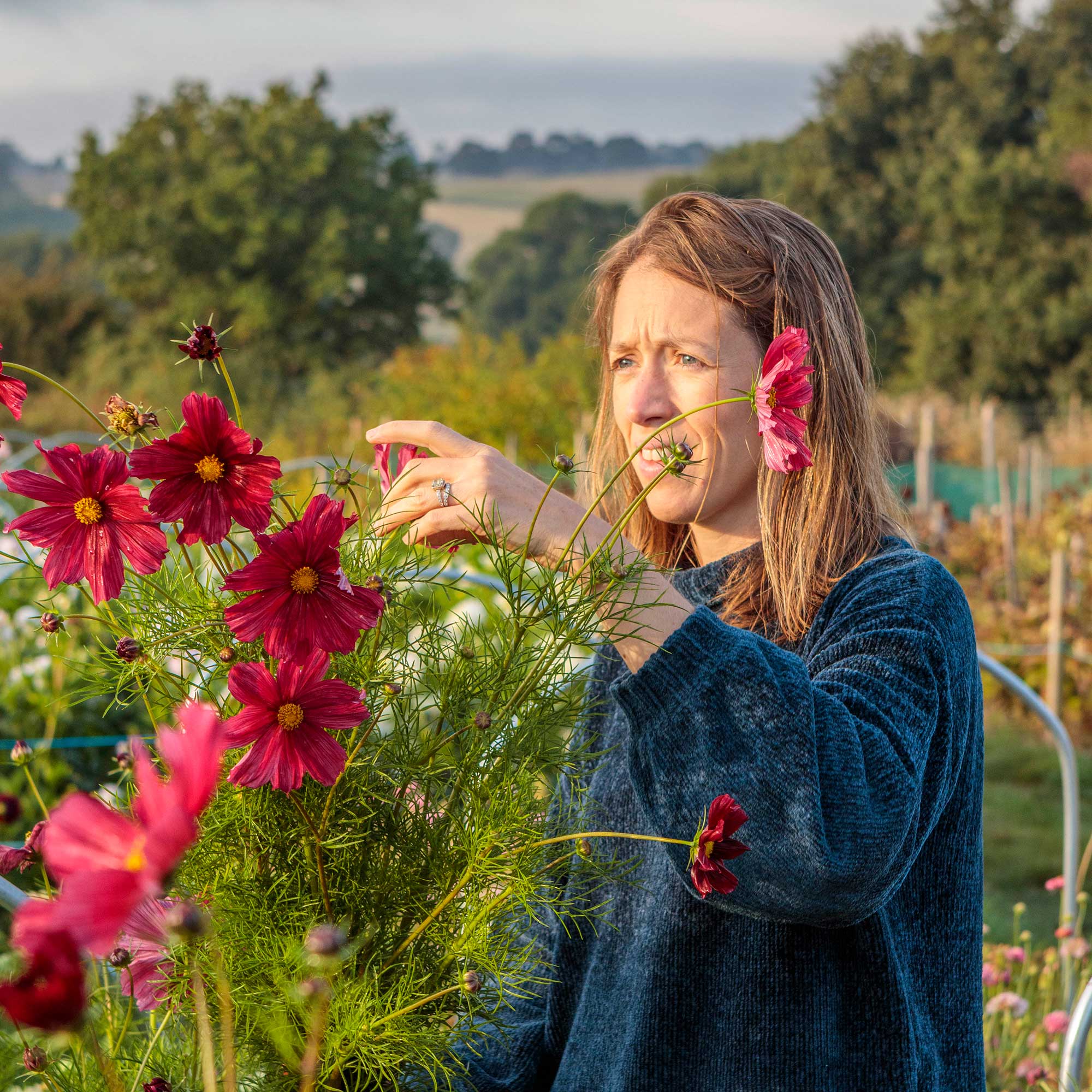
Milly established Flower & Farmer with her aunt, Jo, about six years ago. Their ambition was to grow the finest British cut flowers for weddings, events and florists in an eco-friendly way. They now grow hundreds of varieties of flowers on their three-acre site. Not only are they busy supplying florists and decorating weddings, but they also run a full schedule of courses in growing and floristry throughout the year.
2. Scabiosa
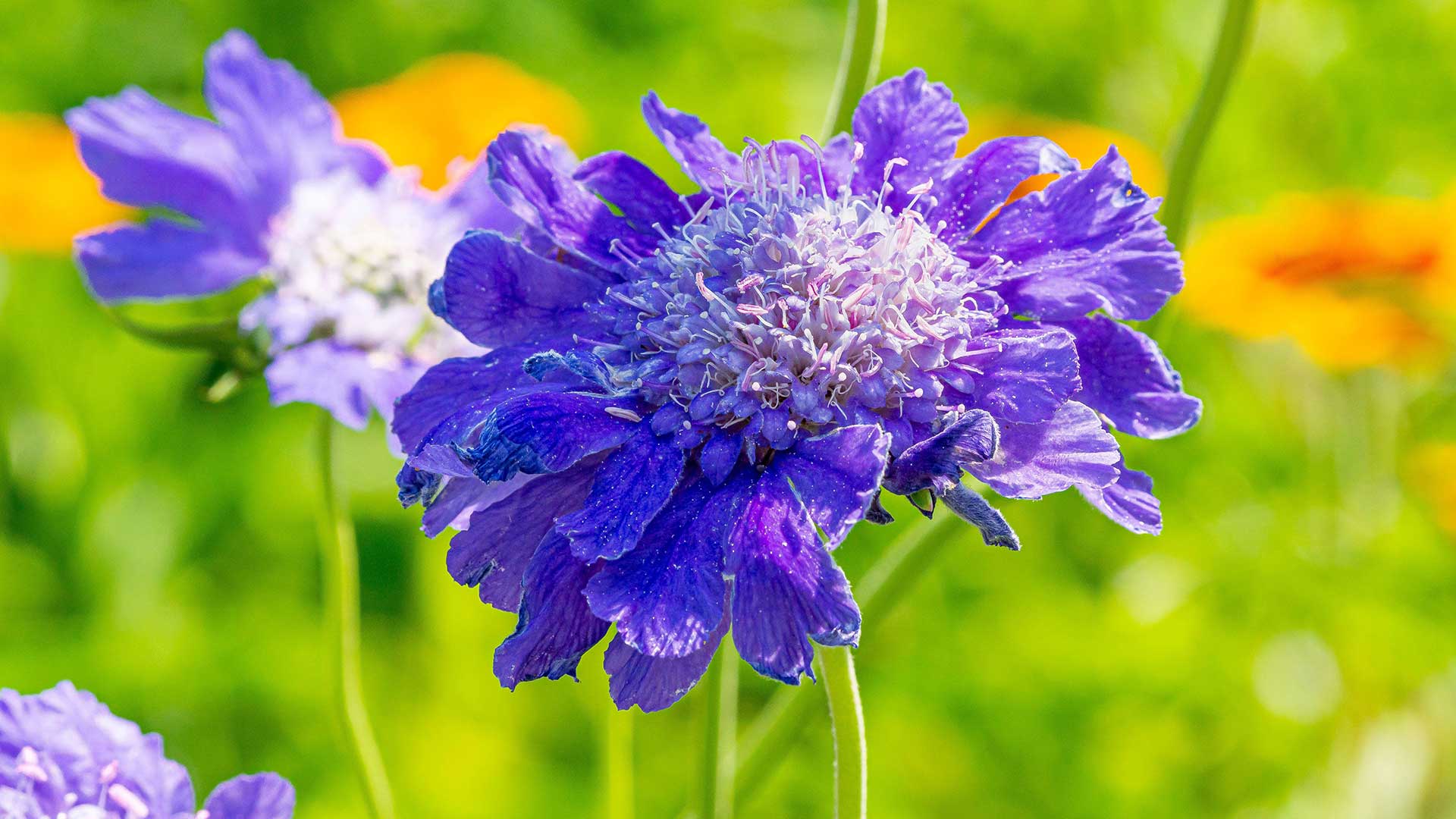
Add a brilliant blue tone to your posies
Rosebie also recommends scabiosa – particularly blue "Fama" and "Miss Wilmot" (which is white). These plants are also known as pincushion flowers, and bloom from May right up until the first frosts, she notes.
Rosebie says they can be picked at any stage, from tight bud to seed head, and that they hold well in a vase. The stems are bendy yet strong, she adds, and look good with any mix of flowers.
To grow these cutting garden flowers in your garden, she recommends planting them about 30cm apart in full or partial sun. They cope with drought – "so an ideal plant for today’s climate," she adds. While perennial, scabiosa hates sitting in waterlogged soil – "so make sure it has good drainage, otherwise you will lose it in the winter!"
Crocus has a range of scabiosa plants available to buy. Not only do they look lovely when cut for the home, but they are also good plants for pollinators.
3. Icelandic poppies
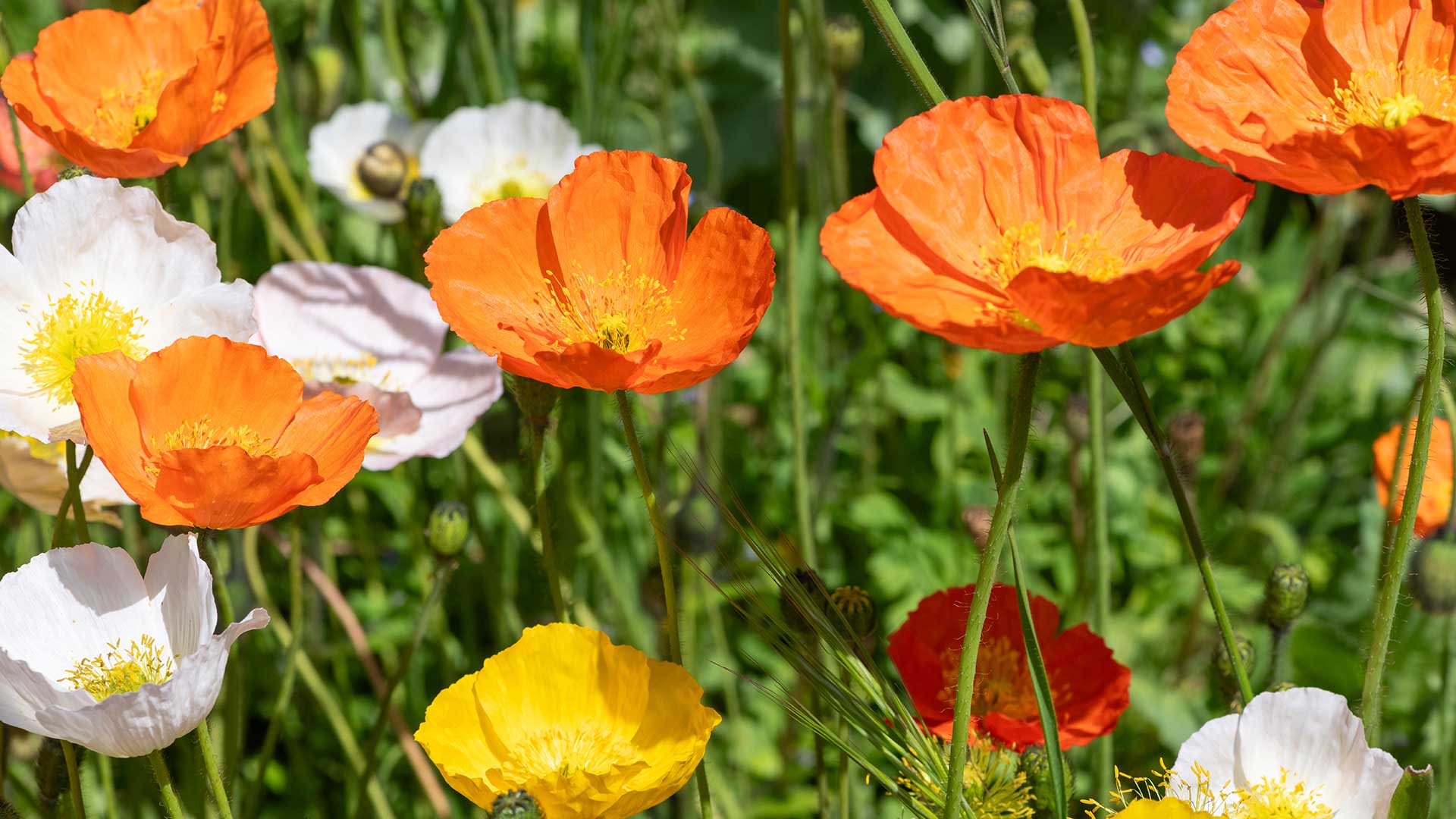
Perfect for bringing the sunshine indoors
"These seemingly delicate flowers – with their furry pods and stems and crinkly, paper-thin petals in soft apricots, pinks, whites and lemon yellows – are deceptively strong growers with a good vase life, too," says Milly.
"We sow in autumn and grow undercover over winter to achieve an eight- to ten-week supply of blooms from spring through to early summer. Each plant produces a prodigious quantity of blooms, which are best enjoyed in a vase on their own."
Icelandic poppy seeds are available from Crocus. If starting them under cover, be sure to harden them off before planting them outside. A spot with well-draining soil and plenty of sunshine is best. You can also choose to sow these alluring plants directly, if you wish.
4. Sweet peas
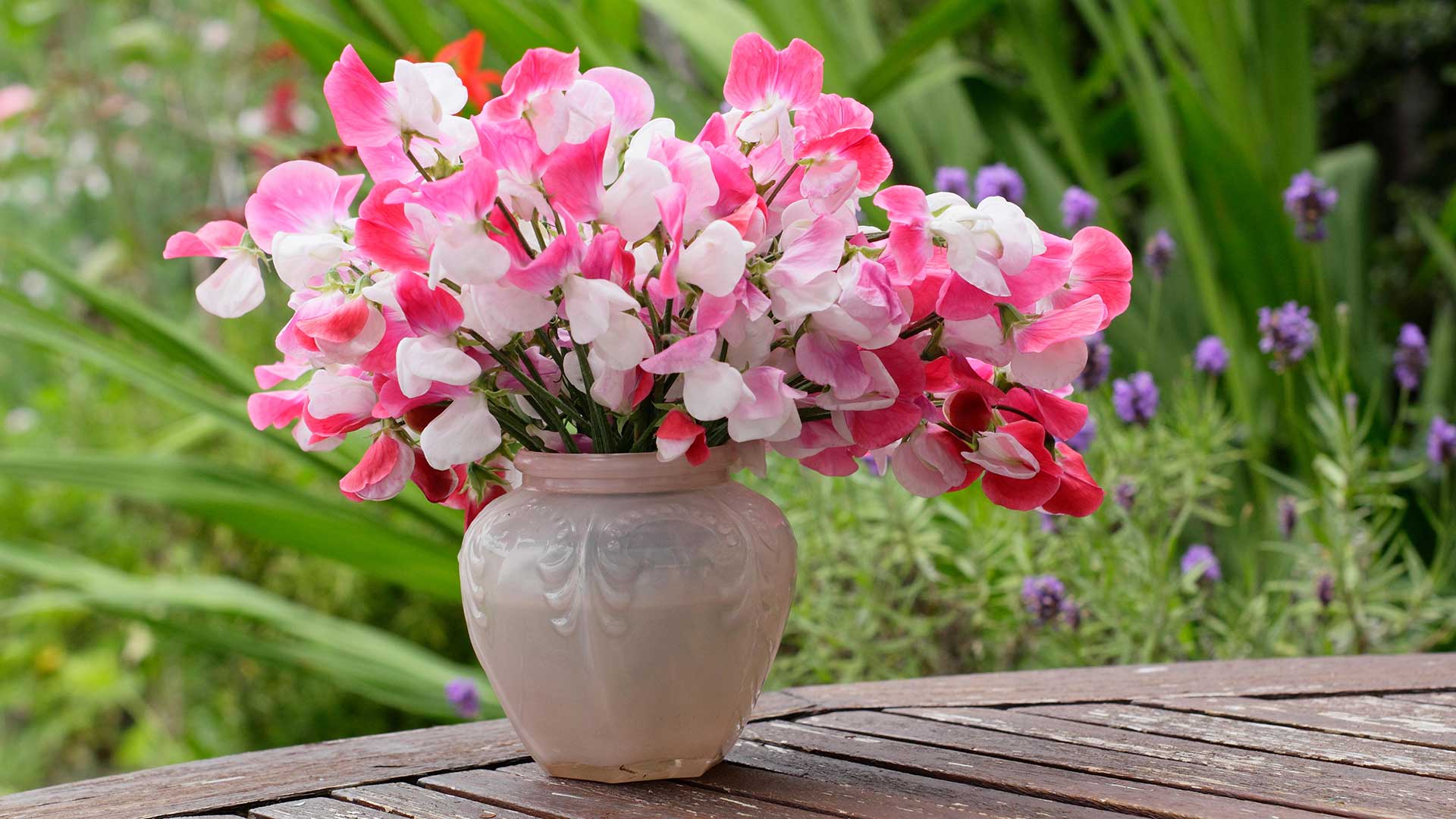
One of the best blooms for fragrance
Milly calls sweet peas the "archetypal, English country garden flower". "There are so many varieties and colours to choose from and they smell divine, too." Rosebie also recommends them, noting that they will flower from May to October if grown well.
Start sweet pea seeds undercover in root trainers. Then, carefully transplant young plants into the garden in spring – Rosebie recommends planting into really good soil enriched with compost and a slow-release fertiliser.
"Let them get established before training them up with bamboo canes or pea sticks," Rosebie continues. "If you want long stems, take the tendrils off and keep tying the stems around the canes." She also recommends keeping them well-watered throughout the summer. "Deadhead frequently – do not let them go to seed because this will shorten their life."
"Sweet pea 'Juliet' is a favourite variety here for its creamy blooms, tinged with apricot-pink," Milly adds. You can find a wide range of sweet pea seeds from Thompson & Morgan.
5. Cosmos
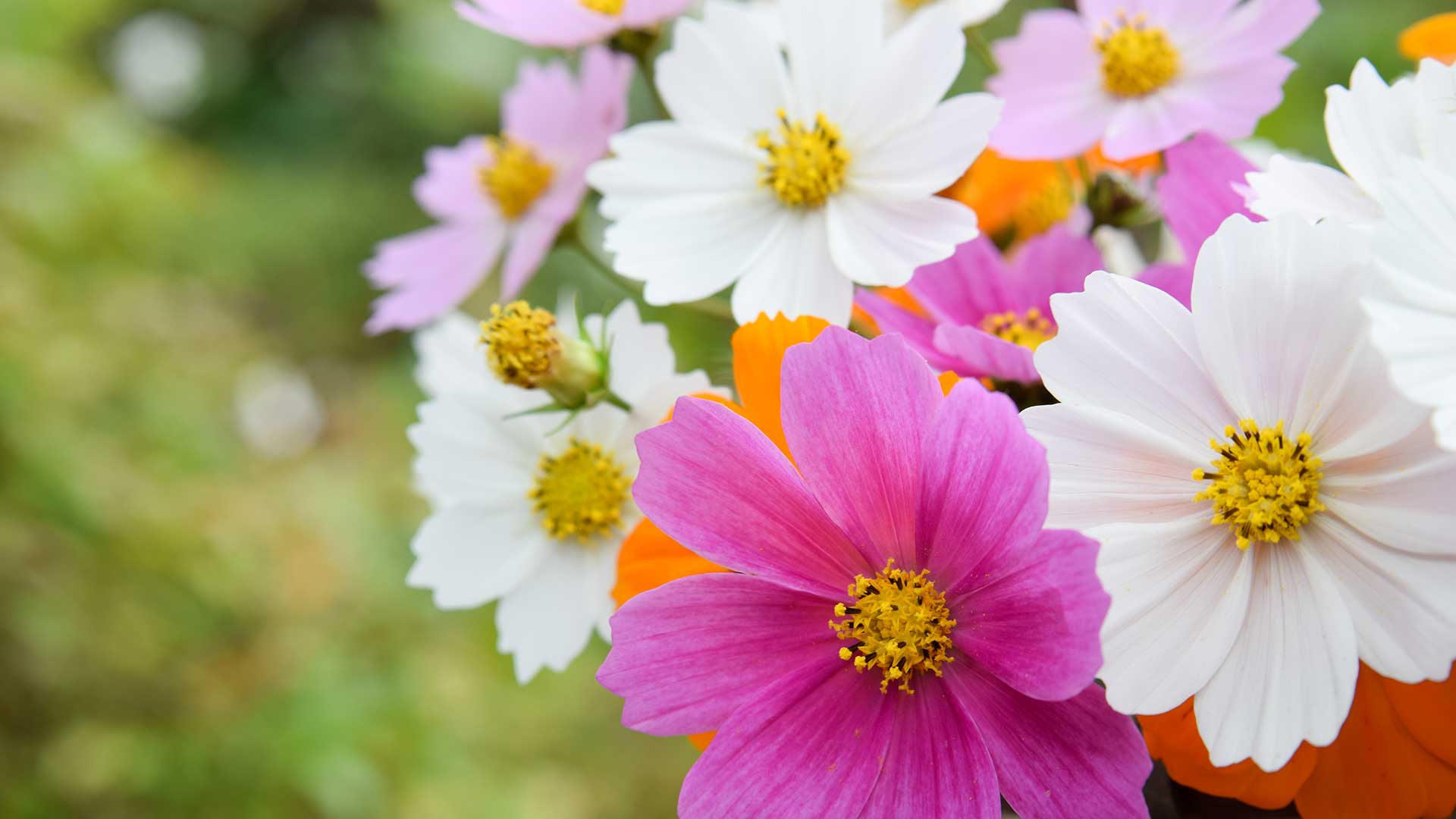
An easy-grower, with feathery leaves
Cosmos are an easy flowering plant for summer, blooming in abundance with their silky petals. Gardening expert Sarah Raven says, “I’m always thrilled by the weekly harvest of cosmos ‘Purity’, with its delicate, snow-white flowers and apple-green foliage. It’s one of the most productive flowers you can grow; simply give it full sun and well-drained, even poor soil and you’ll be rewarded with armfuls of flowers."
Tif Loehnis, the founder of Chippy Flower Farm, suggests combining "Purity" with the pale yellow “Kiroii” and “Sonata Pink” to give you three lovely shades. "These are an example of cut-and-come-again plants: the more you cut them, the more flowers they will produce."
"Purity" seeds are available from the Sarah Raven website.
- Top tip: Tif recommends pairing cosmos with clary sage (Salvia scalerea) and love-in-a-mist (Nigella damascena). "If you leave these both to go to seed at the end of flowering, they will sow themselves for you for the following year. The nigella seed heads are particularly beautiful and are worth drying for winter interest."
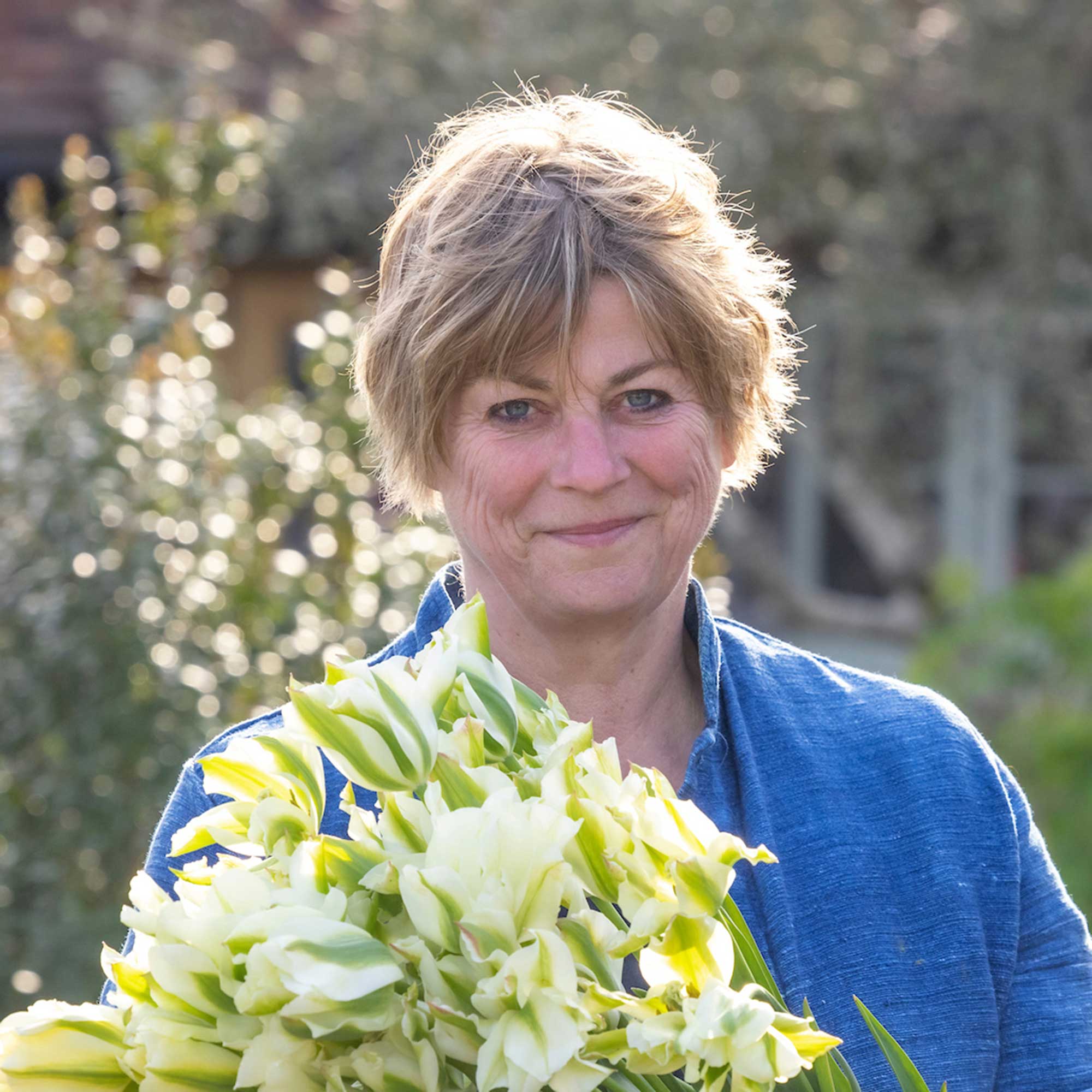
Since the publication of her first book, The Cutting Garden, Sarah Raven has led the way in introducing a new kind of productive gardening. Sarah’s love of gardening extends to all areas, from growing cut flowers and delicious vegetables from seed to designing stunning gardens packed full of variety, colour, and scent. Her popular gardening podcast, grow, cook, eat, arrange, is continually #1 in the Apple Home & Garden chart. She’s published 15 books and runs sarahraven.com, which serves over 900,000 customers.
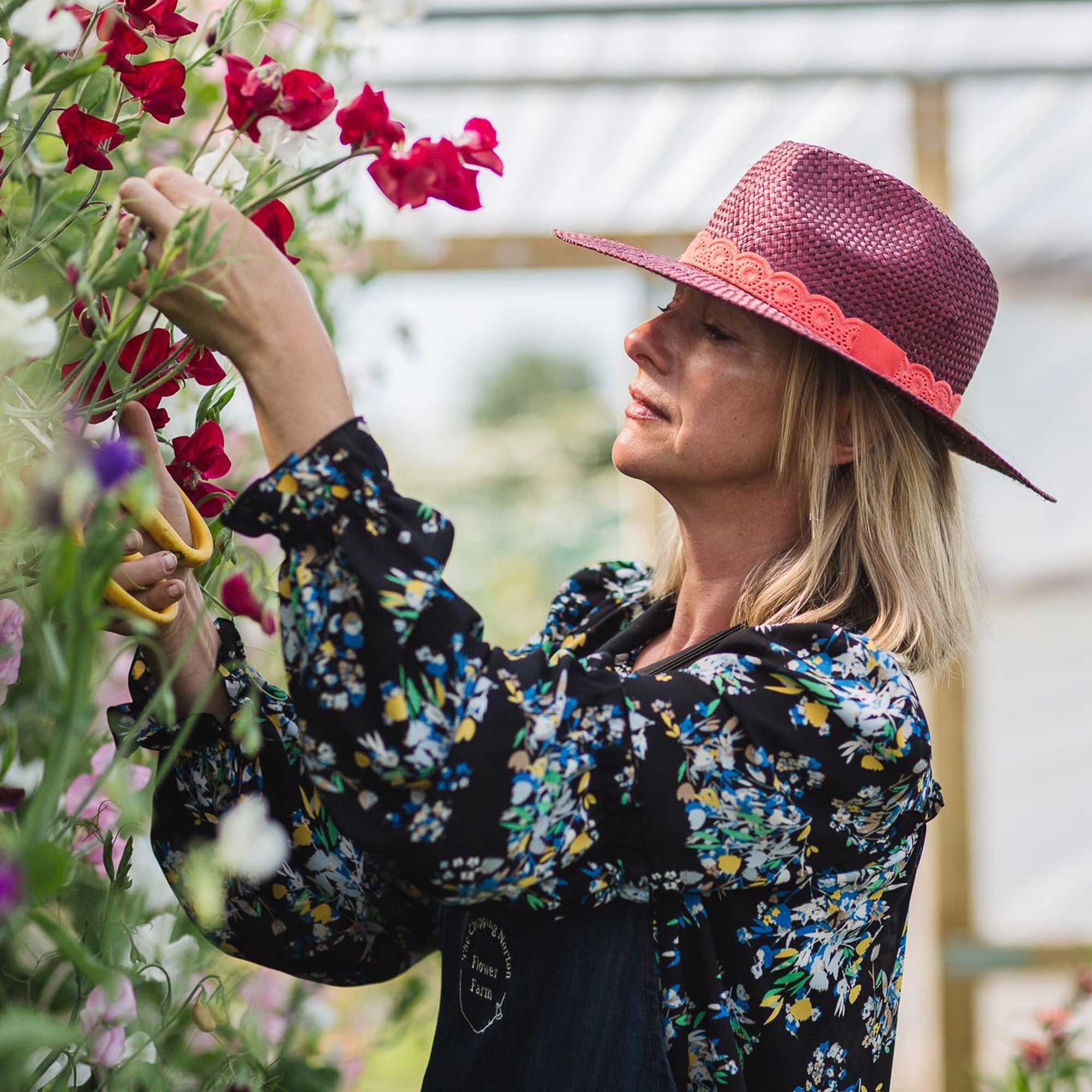
Tif Loehnis founded Chippy Flower Farm, an artisan flower farm run by a group of growers and florists on the edge of Chipping Norton in Oxfordshire. The farm, which started in 2021, supplies naturally grown cut flowers to locals who want a more sustainable alternative to imported flowers. Chippy Flower Farm is a proud member of Flowers from the Farm, the membership organisation for British flower growers.
6. Roses
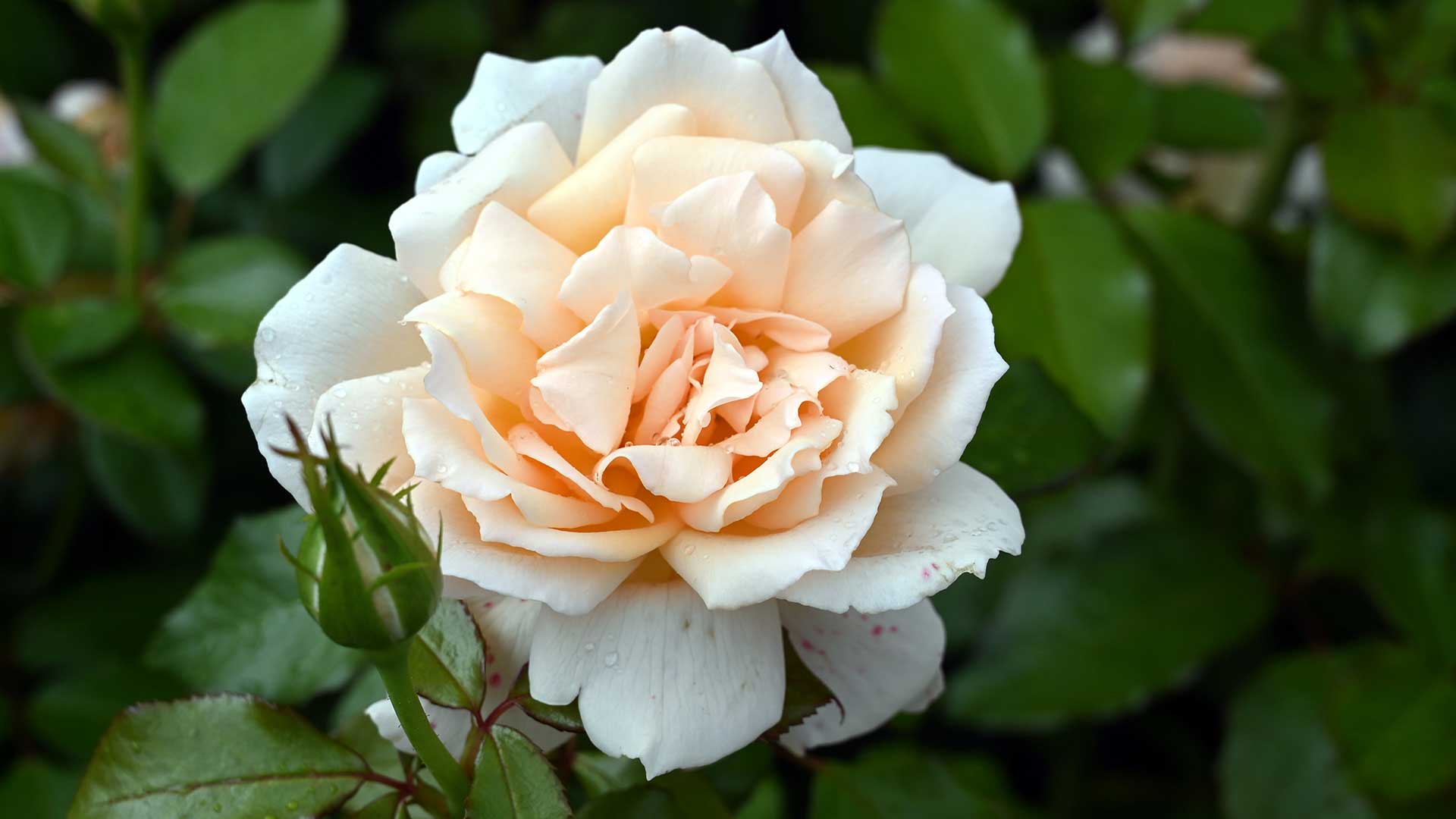
The "Chandos Beauty" rose
"The trick to including roses in a cut flower patch is to choose the right variety," says Rosebie. "The two varieties which are both undemanding and beautiful are 'A Whiter Shade of Pale' [available to order from Crocus from autumn] and 'Chandos Beauty'."
She says that like sweet peas and dahlias, they thrive on good foundations, so she recommends planting them into a good soil with lots of compost and slow-release fertiliser in either full sun or semi-shade. "Roses need at least six hours of bright light every day," she adds.
As for pruning your roses, Rosebie recommends a hard prune in the first spring, followed by mulching to keep the moisture in and suppress weeds. "Deadhead regularly throughout the summer, cutting back to a good strong stem each time."
7. Calendula
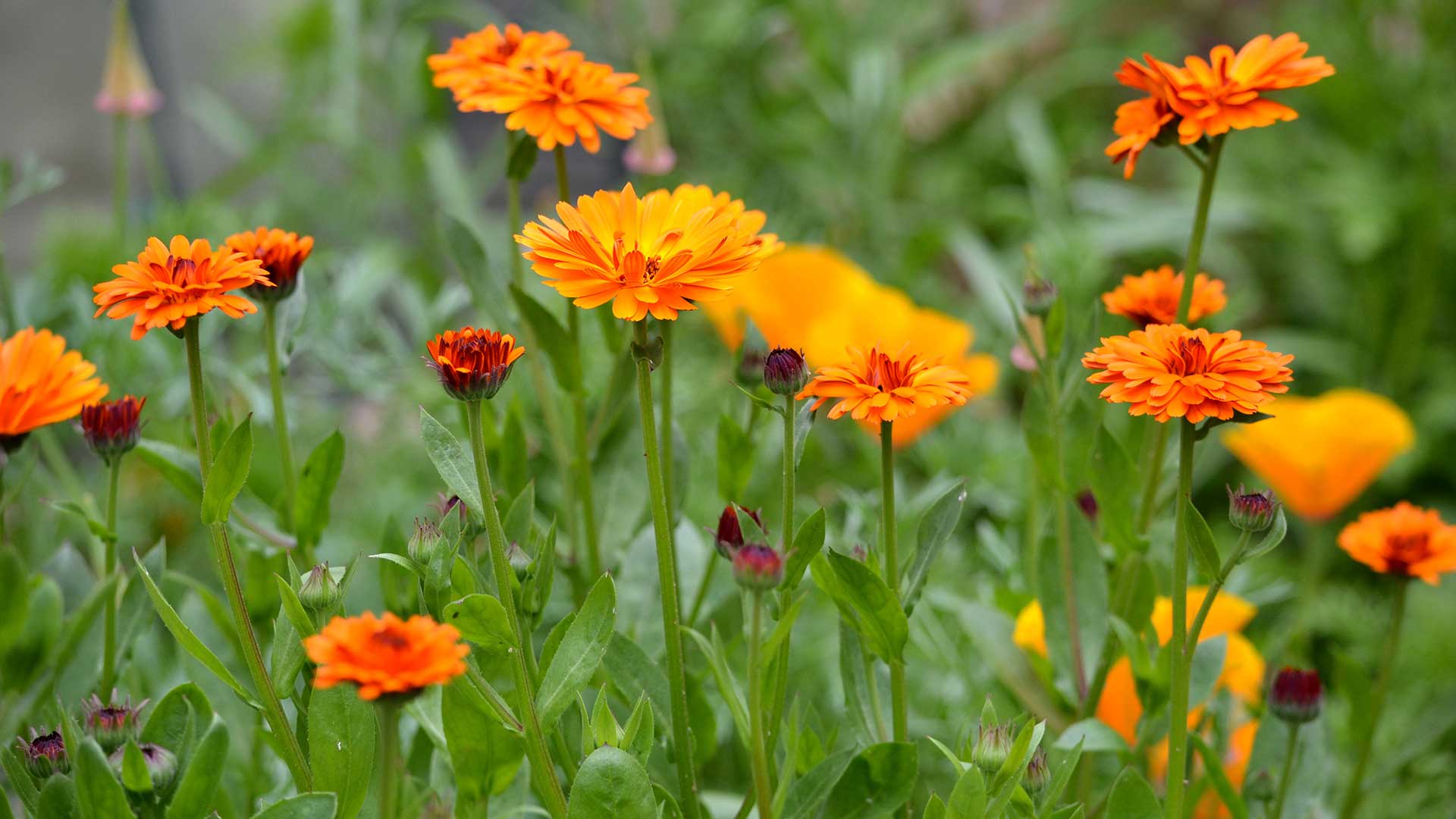
Calendula officinalis "Indian Prince"
"Calendula officinalis ‘Indian Prince’ [available from the Sarah Raven website] is one of my absolute favourite cut flowers," says Sarah. "It has rich, golden-orange petals with a velvety dark eye."
She recommends sowing the seeds directly in March for early summer colour, or in late summer for flowers in autumn. "It’s hardy, shrugs off a chill, and will keep flowering for months if you deadhead or pick regularly. Full sun and light, plus well-drained soil, are ideal. And if you let a few flowers go to seed, they’ll self-sow and reappear next year.”
Also known as English marigolds, these cutting garden flowers make vibrant patio container plants, too.
8. Red bistort
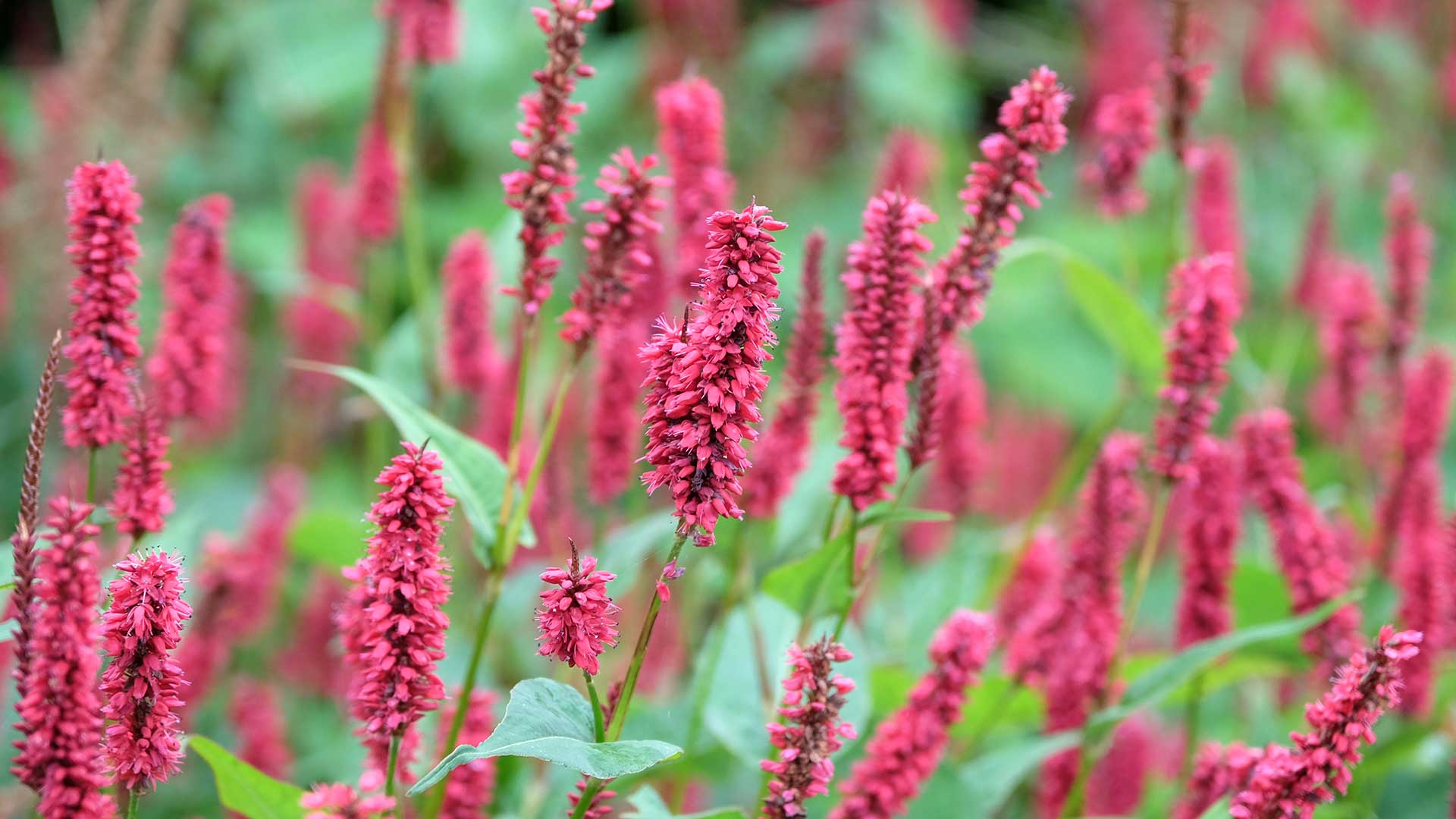
This perennial adds height to the garden and to indoor floral displays
Milly adds red bistort, or Bistorta amplexicaulis, to the list. "Bistorta is clump forming and provides copious amounts of flowers," she says. "Its delicate spires are really useful in wedding and bouquet work."
Try "Blackfield" from Crocus for deep red hues, or for an elegant white variety, opt for "Alba".
Keep the soil moist by watering the plants properly and they should return year after year. You may wish to divide them once they're well established. "Annuals are more labour intensive than perennials, so any cutting patch should include a good number of perennial plants," Milly highlights.
FAQs
What can you use from the vegetable garden for floral displays?
Tif recommends raiding your veg patch if you're lucky enough to have one, especially for herbs. "Rosemary, mint, verbena and marjoram left to flower are wonderful in an arrangement and bring a bewitching scent.
"Raspberry foliage makes for wonderful zingy greenery in an arrangement," she adds.
What can you grow in the cutting garden for spring?
Tif recommends planting narcissi (she suggests looking for interesting varieties with great scent, like "Sir Winston Churchill" or "Bridal Crown") as well as tulips and alliums in the autumn to give you early blooms in the spring.
"Geums (try 'Totally Tangerine' or 'Mai Tai') and astrantia will fill the 'May gap' when many cottage garden varieties are not yet flowering," she adds.
Once you've brought your blooms indoors, it's worth knowing how to make cut flowers last longer. Our guide has plenty of tips, some of which might surprise you.

The garden was always a big part of Holly's life growing up, as was the surrounding New Forest where she lived. Her appreciation for the great outdoors has only grown since then; she's been an allotment keeper, a professional gardener, and a botanical illustrator. Over three years ago, Holly started writing about plants and outdoor living full-time, first for Gardeningetc.com and now for popular lifestyle titles such as Homes & Gardens.
You must confirm your public display name before commenting
Please logout and then login again, you will then be prompted to enter your display name.